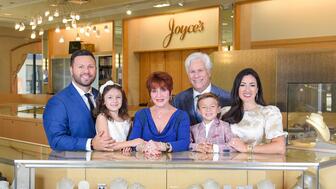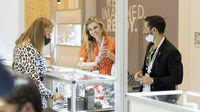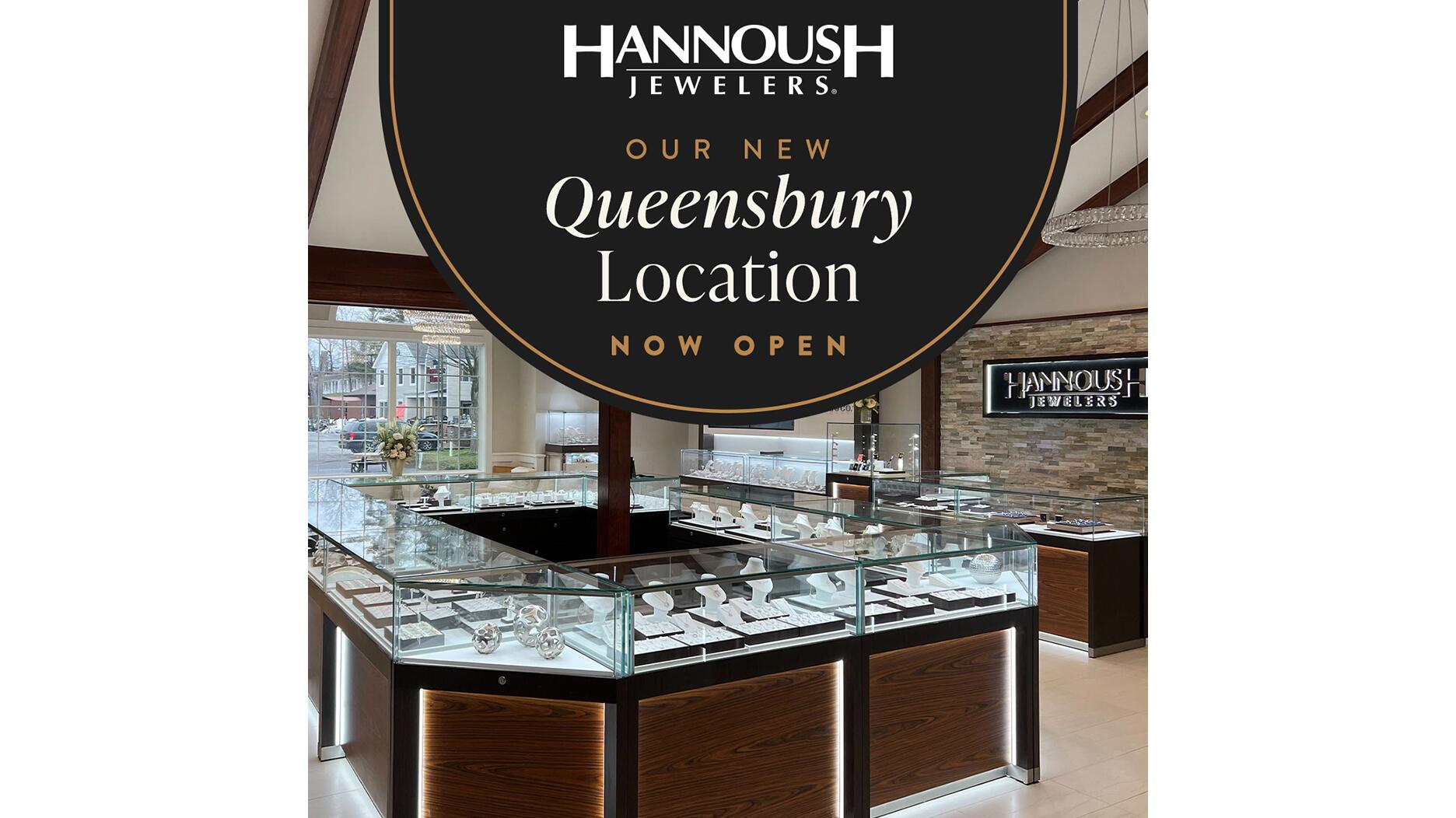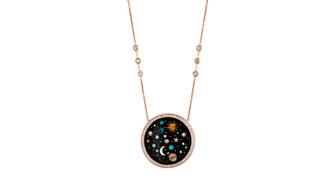The necklace is featured in the brand’s “Rebel Heart” campaign starring Adam Levine and Behati Prinsloo.
Do You Really Need to Drive More Prospects into Your Store?
Peter Smith says while the idea of increasing foot traffic isn’t without merit, it’s not necessarily the panacea some think it is.

Recently, I was speaking with an industry friend who suggested that one of the biggest challenges facing jewelers today is the need to drive more prospects into their stores.
His sentiment was neither unique nor without merit. There certainly has been a gradual decline in retail jewelry store foot traffic in recent years, even as higher average tickets have largely helped to offset the decline.
To believe, however, that getting more people to come into your store is the answer to growing your business can be a bit of a red herring.
Any business would, of course, love to have more potential customers. But the sheer cost in terms of both money and resources involved in increasing foot traffic—not to mention the challenge of guessing what media and messaging would be successful in doing so—might not be the best use of your time or money.
The single best opportunity to grow your business is to convert more of your prospects.
“Executing better on the factors you can control is a preferable strategy to building business, and closing more prospects, particularly at a higher average sale, is the best metric.”Other than having a broad and general “We’ve got to convert more” or “We need to train our people better,” I rarely hear of retailers prioritizing conversion as a strategic business objective, with clear goals and a path to success.
Yet, the rewards for doing so can be immense.
If you are converting three of 10 prospects currently, that means seven people are walking out of your store empty-handed.
Turning just one of those seven people into a customer can result in a 33 percent increase to your business. If you are currently closing two of 10 prospects, converting one of the eight who are not buying will grow your business by 50 percent.
In Mark Ryski’s excellent book, “Conversion: The Last Great Retail Metric,” he wrote: “Sales results are not a reliable proxy for customer experience, but customer conversion rate is. In fact, conversion rate is an excellent proxy for customer experience.”
As nebulous and elusive as marketing can be, even to the most sophisticated of retailers, executing better on the factors you can control is a preferable strategy to building business, and closing more prospects, particularly at a higher average sale, is the best metric.
Here are six controllables that might help you.
You can’t teach drive and you won’t be successful in sales without that essential trait. Hire for it.
2. Replace your fast-sellers.
The least-sexy part of buying is replacing best-selling products, yet it is also the single most important aspect of buying. Suppress your instincts to continually reinvent the product wheel and never, ever allow your best sellers to be out of stock.
3. Don’t overstock your cases.
The more you have, the less your customer sees. Allow your product to breathe and resist the temptation to load up your cases.
No matter how strongly you believe that your customer is best served by having more options, the evidence to the contrary is too strong to ignore. If you’re trying to be everything, you are nothing. Tell your story in a way that makes it easy for customers to understand.
4. Turn your store into a fun space.
Use contrast lighting, music and scent to create an exciting retail environment. Use full-length mirrors and have your people dress more Nordstrom than H&R Block.
If it doesn’t feel like an exciting environment for your people, it likely won’t for your customers either.
5. Have your employees wear your jewelry.
Insist that employees wear their favorite pieces of jewelry and don’t be afraid to go big. If I had a dollar every time I’ve heard people telling me about selling jewelry right off their bodies …
Save the excuses as to why you can’t do it and make it happen.
6. Invest in sales training.
Product training matters and should be an ongoing commitment in your store, but it never ceases to amaze me how little retailers invest in actual sales training.
Make sure your people know the basics of body language, the need for open-ended questioning, the importance of sales principles such as the contrast principle, the paradox of choice and regret avoidance. That’s the stuff that influences consumer behavior and will help your team to convert more of the prospects already in your store.
Again, I am not suggesting that retailers don’t need to invest money marketing, but the best opportunity to improve business is closer than we think—it is every one of those customers who walk out of your store empty-handed amid salespeople's quiet whispers of “That was great, she’ll be back,” or “He was just kicking tires. He wasn’t a real buyer.”
The Latest

The two organizations will host a joint event, “Converge,” in September 2025.

Big changes appear to be on the horizon for the diamond miner and its parent company, Anglo American.

With Ho Brothers, you can unlock your brand's true potential and offer customers the personalized jewelry experiences they desire.

Padis succeeds Lisa Bridge, marking the first time the organization has had two women board presidents in a row.


Jesse Cole, founder of Fans First Entertainment, shared the “five Es” of building a fan base during his AGS Conclave keynote.

The Royal Oak Perpetual Calendar "John Mayer" was celebrated at a star-studded party in LA last week.

For over 30 years, JA has advocated for the industry, fought against harmful legislation and backed measures that help jewelry businesses.

The announcement came as the company reported a 23 percent drop in production in Q1.
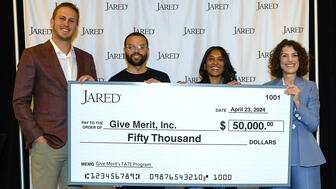
The three-time Pro Bowler continues to partner with the retailer, donating to a Detroit nonprofit and giving watches to fans.

A double-digit drop in the number of in-store crimes was offset by a jump in off-premises attacks, JSA’s 2023 crime report shows.
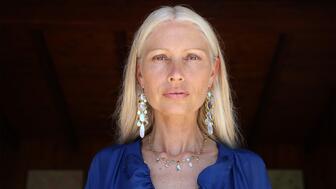
Inspired by the Roman goddess of love, the designer looked to the sea for her new collection.
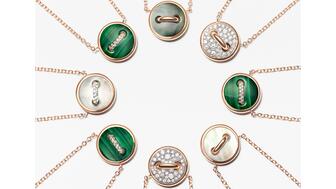
The luxury titan posted declining sales, weighed down by Gucci’s poor performance.

The selected nine organizations have outlined their plans for the funds.

The mining company’s Diavik Diamond Mine lost four employees in a plane crash in January.
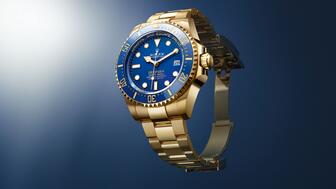
The crown introduced a dozen timepieces in Geneva, including a heavy metal version of its deep-sea divers’ watch.

Emmanuel Raheb recommends digging into demographic data, customizing your store’s communications, and retargeting ahead of May 12.

A 203-carat diamond from the alluvial mine in Angola achieved the highest price.
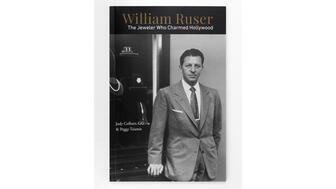
Ruser was known for his figural jewelry with freshwater pearls and for his celebrity clientele.

The “Rebel Heart” campaign embodies rebellion, romance, and sensuality, the brand said.

Editor-in-Chief Michelle Graff shares the standout moments from the education sessions she attended in Austin last week.
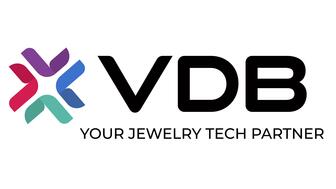
The overhaul includes a new logo and enhanced digital marketplace.
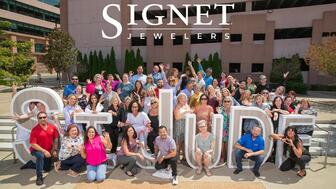
The money will go toward supporting ongoing research and aftercare programs for childhood cancer survivors.

A new addition to the “Heirloom” collection, this one-of-a-kind piece features 32 custom-cut gemstones.

Last month in Dallas, David Walton pushed another jeweler, David Ettinger, who later died.
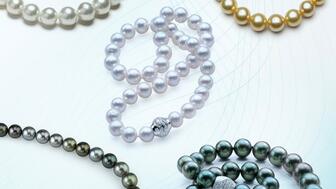
The move will allow the manufacturing company to offer a more “diverse and comprehensive” range of products.
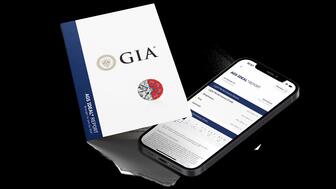
From now through mid-May, GIA will be offering the reports at a 50 percent discount.

